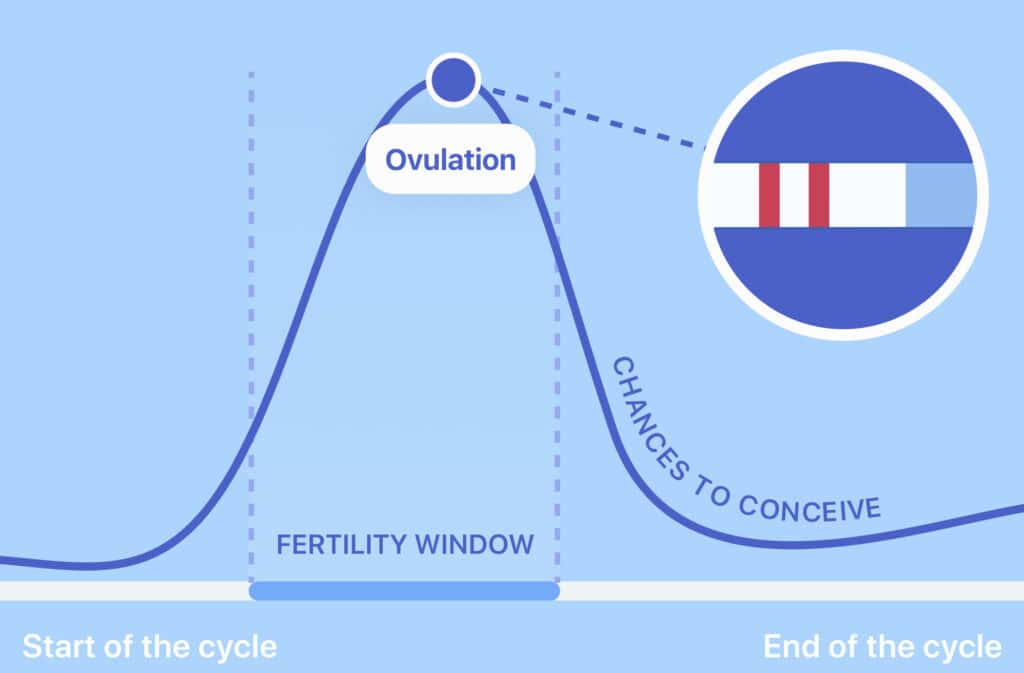Femia > Health Library > Getting Pregnant > Trying to conceive > TTC meaning and a guide to fertility acronyms for beginners
TTC meaning and a guide to fertility acronyms for beginners

- Updated Feb 11, 2025
- Published
CRAFTED BY HUMAN
Crafted by human At Femia, we provide accurate and up-to-date information at every stage of your journey, from trying to conceive, pregnancy and postnatal support. All content is created by a real person based on in-depth research and own professional experience. Femia ensures that you will receive expert advice, strict accuracy and a personalized approach from our authors/medical experts. Learn more about our editorial policy.
FACT CHECKED
Fact checked At Femia Health, we maintain the highest standards of editorial excellence in delivering content focused on helping you conceive, guiding you through pregnancy, and supporting you postpartum. Explore our content review principles to learn how we ensure the accuracy and quality of our health and lifestyle tips for every stage of your journey.

Created with Hector Chapa, MD, FACOG, Clinical associate professor, Obstetrics and Gynecology Texas A&M University, College of Medicine in Bryan-College Station, USA
TTC, or trying to conceive, is a widely used term in fertility and parenting communities. Abbreviations like this one can help you navigate fertility discussions, track ovulations, and spot pregnancy symptoms. Along with TTC, other common acronyms include DPO (days past ovulation), TWW (two-week wait), BFP (big fat positive), BFN (big fat negative), AF (Aunt flo), and others.
If you’re new to the world of fertility, you’re probably wondering what’s TTC and what does BFP mean in pregnancy. Facing a sea of unfamiliar acronyms can feel overwhelming at first, but don’t worry! We’ve all been there.
These shorthand terms are commonly used in online communities, doctor’s offices and support groups to make fertility discussions easier and quicker. Understanding fertility abbreviations can help you navigate your own journey toward conception.
In this guide, we’ll break down some of the most common fertility acronyms and what they mean. We’ll also dip into medical terminology and discuss when it is time to seek medical guidance. Let’s decode the language of fertility together.
Use Femia’s easy-to-use ovulation tracker, symptom log, and daily insights to
understand your fertility better and increase your chances of conception
What does TTC mean?
TTC is one of the most widely used terms in the world of fertility. It’s also a simple one, although not knowing it might make you feel left out of the conversation. Is TTC a medical abbreviation? What does TTC mean?
TTC stands for “trying to conceive.” If somebody is TTC, it means that they are on the journey of actively trying to get pregnant. This may be through natural methods, fertility tracking (apps like Femia can make it a lot easier!), or assisted reproductive techniques.
The TTC fertility journey encompasses ovulation tracking, understanding fertile windows, and making lifestyle adjustments to improve your chances of having a baby. It can be an exciting yet emotional process. Learning fertility terms can help you connect with others and find helpful resources.
👉Find out more: When to have sex during ovulation: Your guide to maximizing fertility
Commonly used fertility acronyms when you’re trying to conceive
While browsing through fertility forums, you are bound to see a bunch of other confusing abbreviations. Let’s break some of them down:
- DPO (Days past ovulation). DPO meaning refers to the number of days since ovulation. DPO acronym helps pinpoint when it’s best to take a pregnancy test and when to look for early pregnancy signs. For instance, not getting your period at 15 DPO could be exciting news.
- TWW (Two-week wait). This refers to the waiting period between ovulation and the earliest time to do a pregnancy test. For many couples, TWW is an emotional time filled with anticipation and symptom-spotting. Support groups can be a safe place to share TWW experiences and get some reassurance.
- BFP (Big fat positive) & BFN (Big fat negative). These two describe the results of a home pregnancy test. A BFP means a positive result, indicating pregnancy, while a BFN meaning is negative. Using these abbreviations is a good way to add some humor to an otherwise stressful topic.
- AF (Aunt Flo). If “getting your period” sounds too lengthy for you, it’s good to know other ways to say the same thing. AF, or aunt flow, refers to menstruation. If AF arrives, it means a new cycle has started, and pregnancy didn’t happen this time. On the other hand, a missed AF can be an early sign of pregnancy.
Additional fertility acronyms
Who knew that trying for a baby would require you to build a whole new vocabulary? Let’s learn some more.
- Baby dust. You might be confused by people sending you lots of baby dust in fertility forums. Baby dust is a sweet way to wish someone good luck on their TTC journey. Think of it as fairy dust, but for making babies!
- BD (Baby dance). Sexual intercourse, especially when timed during the fertile window. Someone might say, “We did the BD last night – fingers crossed!” With all the time you spend on cycle tracking, it’s nice to throw in a little humor.
- DTD (Do the deed). Another way to say BD, because apparently, TTC comes with a whole dictionary of code words for baby-making. It’s commonly used in fertility forums when people don’t want to spell things out too explicitly.
- CM (Cervical mucus). This might not be the most exciting topic, but CM is a big deal in fertility tracking. The consistency of cervical mucus changes throughout your cycle, and when it’s clear and stretchy (like egg whites), it’s a sign that you’re in your fertile window. Think of it as nature’s fertility signal.
- SO (Significant other). Whether it’s a husband, wife, boyfriend, girlfriend, or partner, SO is just an easy way to refer to your other half when talking about your fertility journey.
- OPK (Ovulation predictor kit). The ovulation predictor kits come with test strips that you pee on. These detect a rise in luteinizing hormone (LH) and indicate when your ovulation is near. Let’s practice: if you’re TTC, OPKs can help you figure out the best time to BD.
- POAS (Pee on a stick). POAS is the universal term for taking a home pregnancy test. If you’re TTC, you’ll probably find yourself POAS a lot.
- BC (Birth control). The opposite of TTC. BC usually refers to any method used to prevent pregnancy, like the pill, IUD, or patches.
Use Femia’s easy-to-use ovulation tracker, symptom log, and daily insights to
understand your fertility better and increase your chances of conception
When to seek help during TTC
Trying to conceive can be an exciting journey, but it’s important to know when to seek guidance from a professional. Here are some cases in which you should reach out to a trusted healthcare provider:
- You have been trying to get pregnant for over 1 year without success (or 6 months if you’re over 35).
- You are 36 or over and want to get pregnant. As you may know, fertility naturally declines with age.
- You have a long-term condition such as diabetes. Ladies with metabolic conditions may need guidance on a safe and healthy pregnancy.
- You are worried about passing on a genetic condition, like sickle cell disease, to your baby.
- You take certain medications regularly. Some medicines can affect your fertility or pregnancy, so make sure to discuss getting pregnant with your trusted healthcare provider.
There’s no shame in reaching out for help. Professional guidance can make all the difference. When you do meet with your trusted healthcare provider, don’t hesitate to use these fertility acronyms or ask them to clarify any you find confusing.
👉Find out more: Discharge before period vs early pregnancy: How to tell the difference
Health fertility abbreviations
Not all terms you come across are just casual abbreviations. You might also encounter medical terminology. Here are some terms that often come up in the fertility space:
- AMH (Anti-Mullerian hormone). AMH is a hormone that helps measure ovarian reserve, or how many eggs you have left. It’s commonly tested when assessing fertility and the potential to get pregnant naturally.
- FSH (Follicle-stimulating hormone). FSH plays an important role in regulating your menstrual cycle and stimulating your ovaries to produce eggs.
- LH (Luteinizing hormone). LH is a hormone that triggers ovulation and helps regulate the menstrual cycle. OPKs rely on LH surges to figure out your fertile days.
- BBT (Basal body temperature). Your lowest basal body temperature, usually measured in the morning before getting out of bed. Tracking BBT can help pinpoint ovulation.
- ART (Assisted reproductive technology). ART is a broad term for fertility treatments like in-vitro fertilization (IVF) and intrauterine insemination (IUI). These interventions help couples get pregnant when natural conception is not possible.
- IVF (In vitro fertilization). IVF is a complex fertility treatment during which you go through extensive testing and medication before the eggs are retrieved, fertilized with sperm in a lab, and then transferred back to the uterus.
- ICSI (Intracytoplasmic sperm injection). ICSI is a specialized IVF procedure where a single sperm is injected directly into an egg to assist with fertilization. It’s often used to treat male infertility.
- EDD (Estimated due date). The predicted date when a baby is expected to be born, is usually calculated based on the first day of your last period.
- U/S (Ultrasound). An imaging technique your healthcare provider uses to monitor pregnancy, check for ovulation, or assess your reproductive health.
- PCOS (Polycystic ovary syndrome). PCOS is a hormonal disorder that may cause irregular periods, ovulation issues, and trouble with conceiving. The best time to get pregnant with PCOS is in your late twenties to early thirties.
Questions from the Femia community
What does 2WW mean in fertility tracking?
2WW stands for "two-week wait," which refers to the time between ovulation and when you can take a pregnancy test. It’s important to wait for two weeks for the test results to be accurate.
What does CD mean in fertility discussions?
CD stands for "cycle day," which is used to track specific days in the menstrual cycle. CD1 is the first day of your period, and from there, each day is counted. Understanding CD terminology is super helpful for cycle tracking, fertility treatments, and pinpointing the most fertile days.
Is there an acronym for chemical pregnancies?
Yes, the acronym for chemical pregnancies is CP. A chemical pregnancy is an early miscarriage that happens shortly after implantation, usually before the fifth week of pregnancy. Many people find out about chemical pregnancies because they get a positive pregnancy test that later turns negative as HCG levels drop. We know this is disappointing, but there is a bright side. A CP indicates that implantation happened, meaning pregnancy is possible in the future.
What does EWCM mean?
EWCM stands for "egg white cervical mucus," and it’s one of the best natural signs of fertility. This type of cervical mucus is clear, stretchy, and slippery - just like raw egg whites. If you notice EWCM around ovulation, it’s a great time to try for a baby.
The bottom line
Fertility acronyms like TTC (trying to conceive), DPO (days past ovulation), and BFP (big fat positive) might seem overwhelming at first, but many people eventually find them to be helpful shortcuts, and knowing them can enable you to follow fertility discussions.
If you’re new to these words, start by familiarizing yourself with the ones that matter most to your TTC journey. Use apps, fertility forums, or even a simple notebook to track terms like CD (cycle day) or EWCM (egg white cervical mucus) to better understand your cycle.
Also, don’t hesitate to ask questions in online communities – everyone starts somewhere, and the TTC world is full of people ready to share advice!
References
- “Anti-Mullerian Hormone (AMH) Test: Purpose, Levels & Results.” Cleveland Clinic, https://my.clevelandclinic.org/health/diagnostics/22681-anti-mullerian-hormone-test. Accessed 1 Feb. 2025.
- CDC. “About ART.” Assisted Reproductive Technology (ART), 10 Dec. 2024, https://www.cdc.gov/art/about/index.html.
- “Intracytoplasmic Sperm Injection: Purpose, Procedure & Results.” Cleveland Clinic, https://my.clevelandclinic.org/health/treatments/22463-intracytoplasmic-sperm-injection. Accessed 1 Feb. 2025.
- “Luteinizing Hormone: Levels, Function & Testing.” Cleveland Clinic, https://my.clevelandclinic.org/health/body/22255-luteinizing-hormone. Accessed 1 Feb. 2025.
- “Ovulation Home Test.” Medline Plus, https://medlineplus.gov/ency/article/007062.htm. Accessed 1 Feb. 2025.
- “Polycystic Ovary Syndrome.” National Health Service (NHS), 20 Oct. 2017, https://www.nhs.uk/conditions/polycystic-ovary-syndrome-pcos/.
- “Trying to Get Pregnant.” National Health Service (NHS), 8 Dec. 2020, https://www.nhs.uk/pregnancy/trying-for-a-baby/trying-to-get-pregnant/.
- “What Is the Temperature Method? | Basal Body Temperature.” Planned Parenthood, https://www.plannedparenthood.org/learn/birth-control/fertility-awareness/whats-temperature-method-fams. Accessed 1 Feb. 2025.

Luteinizing hormone (LH) triggers ovulation within 24-36 hours of LH peak. Find out how long after an LH surge do you ovulate to boost your chance of conceiving.

When is it safe to orgasm after giving birth? Discover the optimal timeline and general guidelines for resuming sexual activity after delivery.

Let’s learn how two key female hormones – progesterone and estrogen – differ, how they affect different functions, and why they matter.
